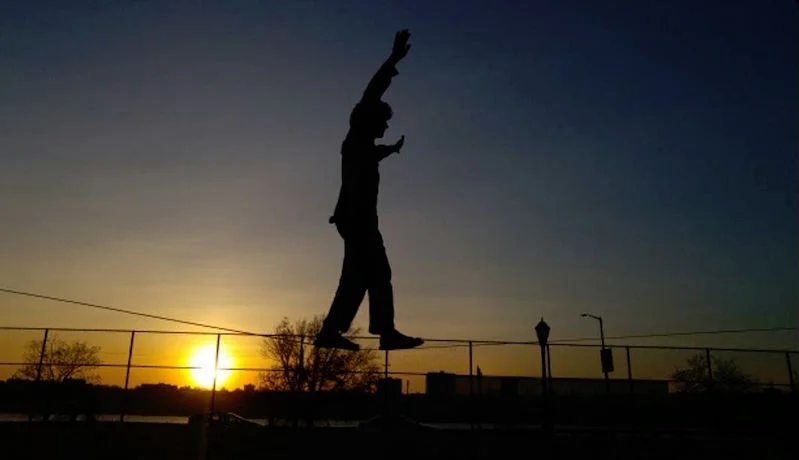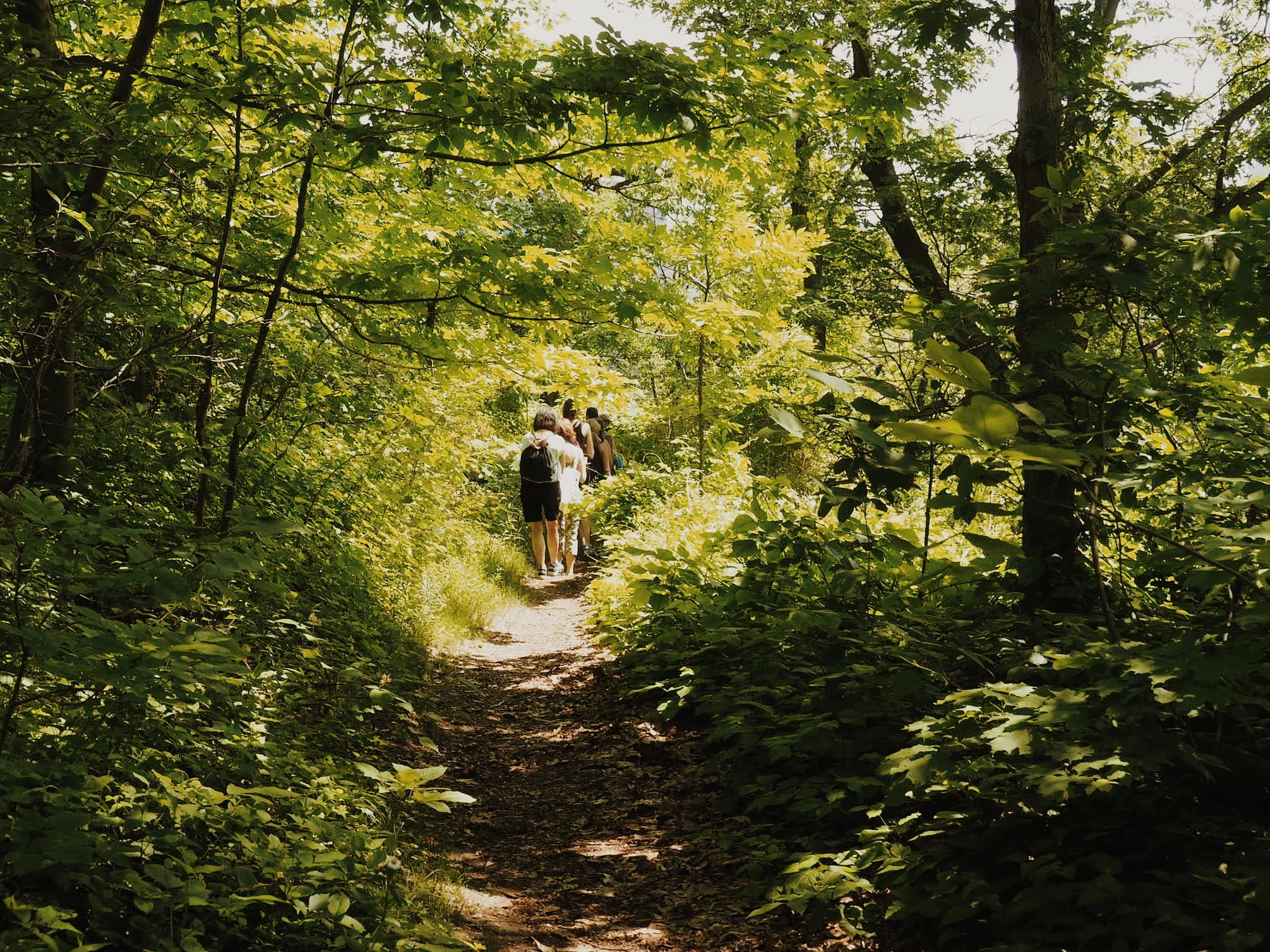Slacklining for Newbies: What is this?
Join us at the OutdoorFest Campout for slackline clinics
What is it?
Slacklining is the act of walking or balancing on webbing tensioned between two anchors. The tension mixed with slack between the anchors allow the line to stretch and bounce.
Why is it awesome?
We actually wrote an entire blog post just on that topic.
What kind of equipment do you need?
Any outdoors store, such as Paragon Sports, should carry the equipment. You can buy a kit that comes with everything you need. The kit will generally come with some variety of flat webbing, carabiners, and tree padding depending on where you buy from.
How do I set it up?
Your slackline length will depend on if you’re a beginner or expert. For beginners, the flat webbings should be between 15-30 feet. You’ll anchor the line 2-3 feet off of the ground and tensioned appropriately so it doesn’t hit the ground when you put your weight on it. You should choose trees at least 12 inches in diameter that look like they’re in good condition and securely rooted into the ground. When you set up the slackline you should use tree protection. This will take some of the pressure off the flat webbing and protect the tree. It is suggested you proceed with caution when using man-made fixtures as anchors, such as fence and light posts.
Where can you do it?
Almost anywhere*. You can set one up in your backyard, the park, or the middle of the woods, the opportunities are endless. Just check to make sure there are no rules against it, if you decide to slackline in a park or other public area.
*Unless you are in New York City in which case the Riverside Rings are your new best friends.
What kind of slacklining is there?
Slacklining (general) is a combination of all the different styles of slacklining. It is often done in city parks and other common urban areas. A wide 2-inch line is most used with this type of slacklining. With this you can practice balancing on the line for as long as possible and perform handstands, handstands, and splits.
Tricklining is the act of walking backwards, performing jumps, turns, running and jumping on the slackline, and bounce walking. This type of slacklining uses a 2-inch wide line and is easy to set up. Expert slackliners will often incorporate these trick into their routine.
Waterlining is when you slackline over water. If you’re looking to try new tricks, but are afraid of falling, this the ideal way to go. These can be set up over lakes, rivers, pools, and boat docks. They can be tensioned everywhere from high above the water to even underwater. Just be cautious that the water is deep enough and completely safe to slackline over.
Highlining is slacklining at a high elevation. These lines are often set up in areas Tyrolean Traverse was previously practiced. Extra precautions are taken for this kind of slacklining, as it is the most dangerous. Many highliners will use special lines, pad any areas that are around abrasive surfaces, and wear a harness or swami belt.
Slackline Yoga is the the same kind of yoga you might do in your home or a studio, just on the slackline. A 1-inch line is most commonly used for this style. Slackline yoga can improve your balance, focus, breath, and flexibility.
Windlining is slacklining in high wind conditions. This can be very challenging, as the wind makes it much more difficult to keep your balance. The person slacklining must properly angle their body and arms in a way so they don’t fall off. The feeling is described as “flying.”
How is it different than tightrope walking?
Slacklining requires a different material and tension than tightwires and tightropes. They are tensioned much less. The webbing is also much flatter and broader than the lines used for tightropes and tightwires.
Header photo by Israel S. from Mappy Hour 2015







